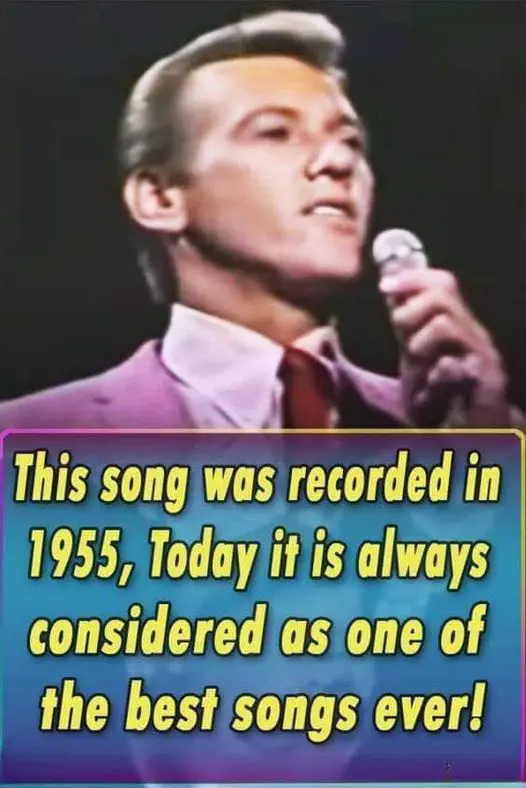Certain songs capture the essence of an era, leaving a lasting impact that echoes through generations. One such masterpiece is “Unchained Melody,” first recorded in 1955 and regarded today as one of the most beloved songs in music history. Initially created for the film Unchained, the song’s journey from a film soundtrack to a timeless classic is filled with stories of heartbreak, nostalgia, and passion.

“Unchained Melody” was written by composer Alex North with lyrics by Hy Zaret for Unchained, a lesser-known film about a prisoner facing the difficult decision between completing his sentence and escaping to reunite with his family. Despite the film’s relatively modest success, the song took on a life of its own, capturing audiences with its emotional depth and soulful melody. North’s haunting composition, combined with Zaret’s poignant lyrics, evoked a universal longing that resonated with listeners.
The song’s success was also due to its versatility; it was covered by numerous artists across various genres, each bringing their own interpretation. Artists including Al Hibbler, Roy Hamilton, and Jimmy Young recorded their versions, adding new dimensions and styles that kept the song alive in public consciousness. However, it was the version by The Righteous Brothers in 1965 that truly cemented the song’s place in music history. With the duo’s heart-wrenching rendition, the song experienced a resurgence, connecting with a broader audience. Their soulful delivery and smooth harmonies became synonymous with “Unchained Melody,” and the song’s popularity soared.
The song was catapulted into an even greater spotlight when it was featured in the 1990 film Ghost. The unforgettable scene, in which Patrick Swayze and Demi Moore share an intimate moment while making pottery, with “Unchained Melody” playing in the background, became a cinematic classic. The song added an emotional layer to the scene, symbolizing love, loss, and longing. This use of the song in Ghost brought it to the attention of a whole new generation, solidifying its place in both music and film history. As critic James T. Miller said, “Few songs evoke the depth of yearning and love as intensely as ‘Unchained Melody.’”
Beyond the film’s influence, the song’s powerful message of love and longing transcended language and culture. People from all walks of life could relate to its lyrics. This universal appeal contributed to “Unchained Melody” becoming one of the most recorded songs of the 20th century. Its lyrics, “Oh, my love, my darling / I’ve hungered for your touch,” speak directly to the heart, creating an immediate connection with listeners. The song’s ability to evoke emotions has made it a popular choice for weddings, anniversaries, and even solemn occasions, demonstrating its versatility as a song of both joy and sorrow.
What makes “Unchained Melody” stand out even further is the uniqueness of each artist’s interpretation. While The Righteous Brothers’ version remains the most famous, other artists have put their own mark on the song. For instance, Elvis Presley, known for his electrifying performances, brought a more intense, dramatic quality to his version, which struck a chord with his fans. Contemporary artists such as LeAnn Rimes and Il Divo also covered the song, showcasing its timeless appeal. Each rendition brings a new layer of meaning, reflecting the individual artist’s style and the emotions of the time.
In addition to its musical acclaim, “Unchained Melody” has also achieved significant commercial success. Over the years, various versions of the song have topped music charts around the world. The Righteous Brothers’ rendition alone has been re-released multiple times, each time gaining new popularity. The song’s success underscores the idea that some music is simply timeless, capable of connecting with audiences across decades.
Another fascinating aspect of “Unchained Melody” is its technical composition. The song’s structure allows for a slow build-up, creating a sense of anticipation that mirrors the emotional intensity of the lyrics. This combination of musical and lyrical depth makes it ideal for artists who want to showcase their vocal range and emotional expression. The song’s melody and lyrics perfectly complement each other, capturing the highs and lows of human emotion in a way that few other songs do.
In recent years, “Unchained Melody” has continued to enjoy relevance, thanks to its frequent appearances in media and entertainment. The song has been used in television shows, commercials, and even social media, where new generations have discovered its beauty. This ongoing presence in popular culture speaks to the enduring legacy of “Unchained Melody.” Its message remains as powerful today as it was nearly seventy years ago, proving that great music truly transcends time.
Ultimately, “Unchained Melody” is more than just a song; it is a testament to the power of music to capture the essence of human emotion. From its humble beginnings as part of a film soundtrack to becoming one of the most celebrated love songs of all time, the journey of “Unchained Melody” is a remarkable story of resilience and impact. As music historian Richard Castle aptly put it, “In a world of fleeting trends, ‘Unchained Melody’ is a beacon of emotional authenticity that reminds us of the timeless nature of true love.”
Whether you first heard it in Ghost, at a wedding, or through a cover by your favorite artist, “Unchained Melody” has a unique ability to touch the heart. Its lyrics and melody continue to inspire and comfort, making it a cherished piece of music history. As listeners continue to discover and re-discover the song, “Unchained Melody” will undoubtedly remain a beloved anthem of love and longing for generations to come.
